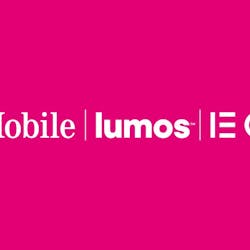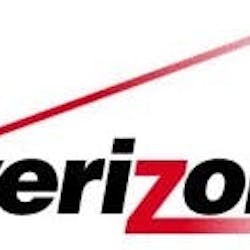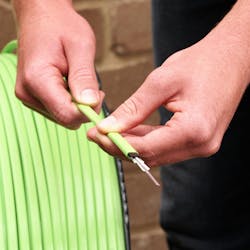As service providers like AT&T, Frontier and others look to connect more homes with fiber-based broadband, they are looking for ways to make deployments to each home more efficent.
Corning’s Multifiber Pushlok Technology, the latest addition to the company’s Evolv fiber-connectivity portfolio, could be the answer. The new technology simplifies and accelerates fiber deployments.
“Multifiber Pushlok is a ‘stick-and-click’ connector technology that draws on Corning’s experience helping network operators reach more than 100 million homes worldwide,” the company said. “The compact and fiber-dense connector allows operators to deploy more fiber in tighter spaces—an essential consideration for increasing data usage.”
Corning introduced the Evolv platform in 2020 as a space-saving solution for service providers. The original Evolv product line included dual-connectivity fiber products; this latest introduction brings multifiber connectivity to the portfolio.
The Multifiber Pushlok Technology unveiling introduces three new solutions:
· Evolv Assemblies with Multifiber Pushlok Technology “add flexibility to network architecture with various sizes and density options. Multifiber Pushlok’s tactile and audible feedback simplifies the cable assemblies’ installation.”
· Evolv Terminals with Multifiber Pushlok Technology “include a new ‘stubless’ version that reduces packaging material by up to 30% per assembly, allowing up to 45% more product per shipping pallet.”
· Evolv FlexNAP with MultiFiber Pushlok Technology “is preconnectorized to fit operators’ customer-specific locations, reducing their reliance on skilled labor and delivering cost savings of at least $25 per home, compared to traditional splice methods. The new system on RPX cable fits into 1.25-inch ducts, surpassing legacy solutions constrained to 2-inch ducts. This results in up to a 50% reduction in carbon footprint through minimized duct material usage. It also features a new built-in, locatable dust cap, which allows operators to swiftly locate the system for buried deployments and simplify network-troubleshooting efforts.”
“We have an unprecedented opportunity to connect the unconnected,” said Bob Whitman, VP of global market development for Corning. “A lot of capital is available, and we at Corning are prepared. We have decades of experience providing broadband connectivity; our technology surpasses 100 million homes globally.”
Cost and time challenges
The introduction of Corning’s Evolv comes as service providers grapple with scaling their builds amid a shortage of trained technicians to conduct installations.
While industry-wide recognition exists that fiber will bring new capabilities and speed to enable current and future applications, there is a gap in available labor to build these networks.
A joint Fiber Broadband Association (FBA)/Cartesian 2023 Fiber Deployment Cost Study found that labor contributed to 73% underground build costs and 67% aerial expenses. Also, the study provides regional cost variations and the cost differential between deployment methods.
Whitman said the company focuses its innovation on solving customer challenges, and these new Multifiber Pushlok technologies accomplish that in several ways. Today, service providers face dual challenges of cost-to-deploy broadband networks and challenging build times for these projects—including labor shortages.
Evolv’s “smaller and denser footprint makes it easier to install,” Whitman said. Additionally, with the product line, “We take a lot of cost out by removing splicing from the field and into our factory,” he added. “We believe these solutions can save at least $25 per home. Because the Evolv solutions are smaller and fit into a smaller duct, there’s also the opportunity for incremental savings. We use 35% less packaging, making it about 45% more efficient to pallet the product. And there’s up to a 50% reduction in carbon footprint.”
Whitman said Evolv’s Multifiber Pushlok capabilities represent a TCD (total cost of deployment) advantage over traditional fiber rollouts involving field termination. “The cost of labor is different for every carrier. There are different variables when working with them to help them decide how to build.”
During the field termination process, a technician must go out with a bucket truck or climb a pole, bring the cable down to the ground, and create a place to work, such as a tent. Then, they access the fiber by opening the cable sheath, finding the fibers, and, after identifying them, stripping and preparing the fiber for splicing.
“This entire process also involves variability among technicians, but it is hours long every time. We take all that and do it in our controlled-environment factory” by technicians explicitly trained for that task,” Whitman said.
With Corning’s factory-terminated products, Whitman said, “You get a repeatable, reliable, lower-cost process. We know that part saves money.”
He added that with Multifiber Pushlok Evolv, rather than going through the hours-long process just described, the field technician “does a simple stick-and-click.”
Connecting the unconnected
While it’s clear that more cities and towns are reaping the benefits of new deployments, the key challenge for service providers is connecting new subscribers with little or no service, particularly in rural areas.
Federal programs like Broadband Equity, Access, and Deployment (BEAD) projects aim to bring connections to the unconnected.
BEAD provides $42.5 billion to expand high-speed internet access by funding planning, infrastructure deployment and adoption programs in all 50 states, Washington D.C., Puerto Rico, the U.S. Virgin Islands, Guam, American Samoa, and the Commonwealth of the Northern Mariana Islands.
Service providers anticipate that more BEAD projects, focusing on serving areas with limited broadband access options, will continue ramping up this year.
However, service providers that secure BEAD funding must meet tight deployment time frames—a necessity not easily accomplished given the skilled-labor challenges many providers currently face.
Whitman said the broadband industry has arrived at a “historic opportunity to connect the unconnected. Operators are facing challenging building environments and cost constraints. We developed this solution with those challenges in mind and want to add to the 100 million homes that our solutions have passed.”
Besides enhancing its Evolv platform, Corning has also advocated for rural providers. In 2023, Corning agreed with rural telco advocacy group NTCA to provide an exclusive supply program to help NTCA members accelerate rural broadband deployments. NTCA members will have access to Corning’s FlexNap™ system and Evolv™ portfolio as part of that program.
For more news, products, and technical profiles in broadband cable and telecommunications technology, subscribe to BTR's newsletter and follow us on LinkedIn, Twitter, and Facebook.







